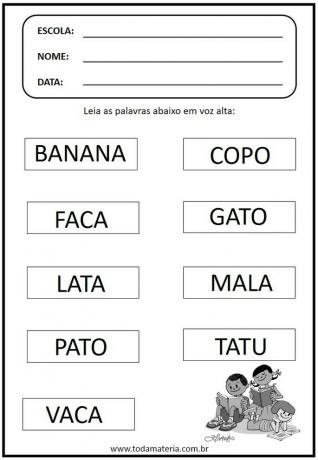Escola Nova is a movement that proposed changes in the education system, placing the student at the center of the knowledge construction process.
The movement's creators considered that traditional teaching methods were no longer as effective in social reality of the moment and did not guarantee the preparation of students to be well-adapted citizens Social.
In addition, the New School educators credited the school with the role of a democratizing and inclusive agent for the citizens.
The emergence of the New School
The emergence of the ideas of Escola Nova initially takes place in Europe in the late nineteenth century.
The movement, also called Escolanovismo or Escolanovista, appears as a way of questioning and opposing the traditional molds used in education until then. It was based on ideas from Jean-Jacques Rousseau, Heinrich Pestalozzi, John Dewey and Freidrich Fröebel.
It was motivated by the rapidity of social, political and economic transformations at the time, as well as their consequences. These changes were mainly the result of changes caused by the Second Industrial Revolution, which took place in the late nineteenth century.
Characteristics of the New School
The Escolanovista movement believes that education is the most important element for building a society based on democratic ideals, fair and with equal opportunities.
To encourage the process of knowledge development, in Escola Nova's pedagogy the following characteristics are considered indispensable:
- Centering the learning process on children's needs.
- Attention to the individuality of each student.
- Respect for diversity.
- Integration of school learning with important social concepts.
- Encouragement of reflection, observation and critical thinking.
- Valuing students' personal experiences in the learning process.
- Preparing students to live in a dynamic and constantly changing world.
- Integration of all human aspects: rational, emotional and physical.
- Offering a wide range of democratic, free and secular education.
The application of these ideas leads the Escolanovista pedagogy to encourage learning in everyday life, based on practical applications.
Some examples are: conducting research, studying social issues and encouraging problem solving.
From these experiences, and according to the performance and interest shown by each student, different educational content can be applied to each child.
New School and Democracy
For Maria Lúcia de Arruda Aranha, an educator who studied Philosophy of Education, Escola Nova would be the ideal way to overcome social inequalities. She defends the idea that the Escolanovista pedagogy would be able to allow more mobility and social justice.
The relationship of the pedagogical method proposed by the movement with the democratic bases is essential to achieve the goals desired by the defenders of Escola Nova.
Also read the meanings of Democracy, Philosophy of Education and School.
The New School in Brazil
In Brazil, Escola Nova gained strength from the 1920s onwards, with Rui Barbosa being the pioneer of Escola Nova ideas in the country.
In 1932, the Pioneers of Education Manifesto. Fernando de Azevedo, Lourenço Filho and Cecília Meireles were some of the educators who signed the publication.
The document includes the concepts of Escola Nova with adaptations to the social context of the country at the time. Claims the creation of a education system more suited to Brazilian needs, which could be considered a more democratic educational model.
In the Manifesto, Brazilian educators asked that the public school offered in the country be guaranteed to the entire population, focused on reducing social differences and valuing the skills perceived in each student.
As in Europe, the educators who supported the movement also wanted to reform the country's traditional teaching method. They believed that education and the encouragement of learning could guarantee more equality among citizens.
To learn more about education and teaching, read also the meanings: cognitive development, pedagogy, learning and school inclusion.


